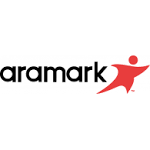 There is a large myth that private prisons are synonymous with prison industrial complex which is untrue. The United States has 5% of the population but 25% of the world’s prisons which makes it a profitable business for the few that are in it (DuVernay, 2016). Private prisons make up 8% of the total number of prisons (Sawyer & Wagner, 2019). They are a part of the prison industrial complex where some of the largest private prison corporations, Core Civic and GEO Group, held half of the private prison contracts and made collectively $3.5 billion in 2015 (Gotsch & Basti, 2018). Private prisons are just a piece of this system which also includes vendors and those who employ prisoners to manufacture their products.
There is a large myth that private prisons are synonymous with prison industrial complex which is untrue. The United States has 5% of the population but 25% of the world’s prisons which makes it a profitable business for the few that are in it (DuVernay, 2016). Private prisons make up 8% of the total number of prisons (Sawyer & Wagner, 2019). They are a part of the prison industrial complex where some of the largest private prison corporations, Core Civic and GEO Group, held half of the private prison contracts and made collectively $3.5 billion in 2015 (Gotsch & Basti, 2018). Private prisons are just a piece of this system which also includes vendors and those who employ prisoners to manufacture their products.
The prison industrial complex system benefits anyone with contracts with the federal government or the prisons themselves. In the documentary, 13th, Ava DuVernay mentioned ALEC, American Legislative Exchange Council, was one of the biggest lobbyists with the Correction Corporations of America’s interests. They lobbied for more prisons to be opened so they could have more contracts (DuVernay 2016). 
Besides Correction Corporations of America, the companies that are involved with being vendors in the prison industrial complex are Securus Technologies, Aramark, and Corizon Health as some of the major corporations that make millions of dollars due to these contracts that will be paid out regardless of the quality of services they provide (DuVernay, 2016).
The prison industrial complex also covers prison employment. Companies often contract out labor to prisons because they don’t have to pay as much as free-market labor. Federal prisoner wages generally range from $0.12 to $1.15 per hour which is much cheaper than paying someone minimum wage. There are some states such as Ohio where inmates aren’t paid but they receive time off of their sentence for their labor (Thompson, 2012). Companies that employed prison labor as of 2016 were Mic rosoft, Boeing, JC Penny’s, Victoria’s Secret, and most of Idaho’s Potatoes. The working conditions are essentially the conditions of sweatshops (DuVernay, 2016).
rosoft, Boeing, JC Penny’s, Victoria’s Secret, and most of Idaho’s Potatoes. The working conditions are essentially the conditions of sweatshops (DuVernay, 2016).
More politicians and activists are calling for the prison industrial complex to end but it is starting to move into the privatization of bail and probation (DuVernay, 2016).
Songs Regarding the Prison Industrial Complex
References
DuVernay, A. (Director). (2016). 13th [Motion Picture]. United States: Netflix.
Gotsch, K., & Basti, V. (2018, August 2). Capitalizing on Mass Incarceration: U.S. Growth in Private Prisons. Retrieved December 2, 2019, from https://www.sentencingproject.org/publications/capitalizing-on-mass-incarceration-u-s-growth-in-private-prisons/.
Sawyer, W., & Wagner, P. (2019, March 19). Mass Incarceration: The Whole Pie 2019. Retrieved December 2, 2019, from https://www.prisonpolicy.org/reports/pie2019.html.
Thompson, H. A. (2012). The Prison Industrial Complex. New Labor Forum, 21(3), 39–47. doi: 10.4179/nlf.213.0000006





Comments are closed, but trackbacks and pingbacks are open.